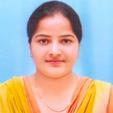
Priyanka Anand
Work place: BPS Women University, Khanpur Kalan, Sonipat,131305, India
E-mail:
Website:
Research Interests: Computing Platform, Planning and Scheduling
Biography
Priyanka Anand received her B.E. in Electrical Engineering in 2004, M.Tech in Electrical Engineering (Instrumentation & Control) in 2007 and currently pursuing Ph.D in Electrical Engineering from IKG Punjab Technical University, Kapurthala, Punjab, India. She is presently working as an Assistant Professor in the Department of Electronics and Communication Engineering in Bhagat Phool Singh Mahila Vishwavidyalaya, Khanpur-Kalan, Sonepat, Haryana, India and having teaching experience of about 12 years at undergraduate and postgraduate level. She has published more than 20 research papers in international, national journals and conference proceedings. In addition, she is also the life member of Indian Society of Technical Education (ISTE). Her area of interest includes modeling and simulation, soft computing and renewable energy based hybrid system
Author Articles
Realization of Flip Flops using LabVIEW and MATLAB
By Mittarpal Naresh Kumar Priyanka Anand Sunita
DOI: https://doi.org/10.5815/ijeme.2017.05.02, Pub. Date: 8 Sep. 2017
Digital electronics is the backbone of current technology, play a pivotal role in the growth of humanity. Digital memory is part of digital electronics consists flip-flops building blocks designed by using logical NAND and NOR gates. Validation of storing information in form of bits can be understood from analysis of working of flip-flops. In the present investigation, VI Model of the different flip flops in LabVIEW has been realized and simulation implementation of flip flops is utilized to analyze the functioning of memory elements. The characteristics table of all kind of flip flop is verified using VI Models. Moreover, different flip-flops are also realized in MATLAB using Simulink. In the phase of digital and internet, this student -centric learning of existing theory of flip-flops can easily understand using simulation environment.
[...] Read more.Other Articles
Subscribe to receive issue release notifications and newsletters from MECS Press journals